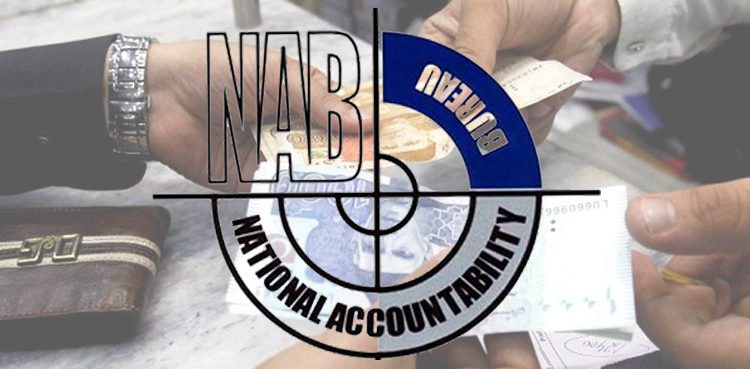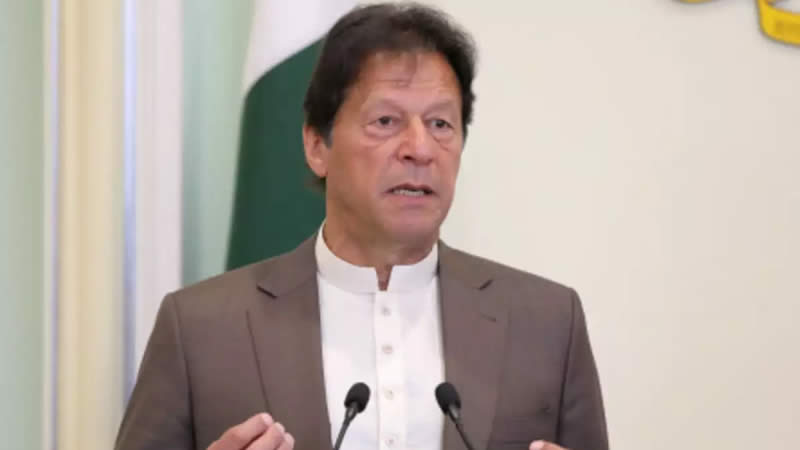 KARACHI (October 11 2010): Some sizeable cotton lots were lifted by cotton exporters, while spinners and textile millers were visible in lifting despite price kept rising pace mainly on the foreign grounds, during the week ended on October 9,2010. NY futures settled at highest level in 15 years.
KARACHI (October 11 2010): Some sizeable cotton lots were lifted by cotton exporters, while spinners and textile millers were visible in lifting despite price kept rising pace mainly on the foreign grounds, during the week ended on October 9,2010. NY futures settled at highest level in 15 years.
WORLD SCENARIO:
Week under review opened December 97.83 cents a pound. Sustained weak dollar value has offered support to cotton features, which are keeping firm. But the strength developed perception in cotton players that a correction was up there. Talking in October about perennial surge in cotton since September, over four weeks give players wisdom that a correction is over due.Still surprising scenario is that demand has not been losing pace. This is despite China is off markets until next week and sudden come back may fuel further.All was good on cotton front until September when devastating floods in Pakistan and snow fall and floods in China sent scenario upside down. China maintains good reserves for the worse days. It has always ready to order for imports if slight downside is seen in prices. The rising trend in cotton prices played a funny role that of come back of people in some country particularly Africa to switch back to grow cotton.The ICAC and renowned bodies were recording about recession, which was giving way though cautiously slow. India, which has good cotton harvest had first decided to export, more so on compassionate ground to Pakistan, but on the second look, it not only restrained supplies abroad but cancelled the accords to exports – over 0.4 million bales – perhaps all was in pipeline for this embattled country. Efforts are in full swing and more seem to have been yielding positive results for free access to EU though tight cotton situation at home is quite evident.
On Monday the NY cotton futures finished near a three-week low on follow-through investor sales and profit-taking by players taking cash off the table after fibre contracts sprang to a 15-year high last week. ICE Futures US benchmark December cotton contract shed 0.19 cent to end at 97.83 cents per lb. It was the lowest close for the second position contract since the middle of September. The contract traded from 95.31 to 98.47 cents. Total volume traded was heavy, as it reached 26,650 lots more than 50 percent up on the 30-day average at 17,235 lots, preliminary Thomson Reuters data showed.On Tuesday the NY cotton futures settled higher as they recovered from a three-week low, with investors encouraged by strength in outside markets and scattered talk of Chinese off-take. ICE Futures US benchmark December cotton contract rose 0.73 cent to finish at 98.65 cents per lb. It had ended on Monday at 97.83 cents, the lowest finish for the second position contract since the middle of September. The contract traded from 96.90 to $1.004, rising above $1/lb for the first time since last week. Volume traded reached 14,284 lots, nearly 20 percent below the 30-day average at 17,284 lots, preliminary Thomson Reuters data showed.On Wednesday the NY cotton futures closed firmer on investor buying tied in part to the expectation a government report on Thursday will show strong US cotton export sales, brokers said.
The market is also bracing for Friday’s release of the monthly supply/demand report from the US Agriculture Department. ICE Futures US benchmark December cotton contract rose 1.19 cents to finish at 99.75 cents per lb. The contract traded from 98.10 to $1.0014. It is an inside day since the range is within Tuesday’s 96.90 to $1.004 band. Total volume traded reached 11,478 lots, about a third below the 30-day average at 18,107 lots, preliminary Thomson Reuters data showed. According to a report some analysts said on Wednesday that cotton market players will look closely at US exports and changes in the numbers of No 1 consumer China, as well as India and Pakistan when Washington releases a key crop report this week.The US Agriculture Department (USDA)’s monthly supply/demand report will be issued on Friday, less than two weeks after cotton prices vaulted to a 15-year high on strong demand for the fibre, tight stocks and heavy buying by investment funds. The analysts expect upward revisions in US cotton exports, given strong sales and a reduction in China’s production and ending stocks coupled with any increase in its cotton imports. The trade will digest any change in the USDA estimate of India’s cotton exports and the latest forecast for Pakistan, whose cotton crop has been hit hard by floods.
On Thursday the NY cotton futures closed sharply higher on speculative and trade buying as players braced for release of a key government crop report. ICE Futures US benchmark December cotton contract went up the 4.00-cent limit to finish at $1.0375 per lb, the highest close for the second position cotton contract in a week. The session low was at 99.64 cents. Back contracts posted gains from 0.83 cent to 2.03 cents. Total volume traded hit 30,642 lots, about two-thirds above the 30-day average at 18,305 lots, preliminary Thomson Reuters data showed.On Friday the NY cotton futures settled at its highest level in 15 years on investment fund and Chinese mill buying combined with a bullish US government crop report. Values may push past the all-time record in the days ahead. Cotton surged before the US Agriculture Department (USDA) published its much anticipated monthly supply-demand report earlier Friday, but the market took off after the USDA’s cotton figures came out. ICE Futures US benchmark December cotton contract climbed the 4.00-cents limit to trade at $1.0775 per lb, the highest level in 15-years.
LOCAL TRADING:
Cotton buyers were far from impressed by talks about shortfall in cotton arrival and presumably leading to bulk lifting – 17000 bales again despite rate keeping at Rs7100. The sales in ready ranged between Rs6900 and Rs7200. In Sindh seed cotton prices showed gain of Rs50 to Rs3150 and Rs3200 in Punjab phutti was put at Rs2900 to Rs3100. In the meantime PCCA fortnightly report spoke about phutti arrival as low-it was 2.6 million bales lower than 3.7 million bales in 2009-10.On Tuesday local cotton was down under world price impact. The official spot rate was down by Rs50 to Rs7050. The size of buying remained same at 1700 bales at somewhat lower price at Rs6800 and Rs7150, phutti prices in Sindh and Punjab sustained overnight level. The world trend impacting Pak cotton prices much to the relief of cotton consumers.On Wednesday cotton prices remained firm as exporters of cotton step in to buy as spot stayed put at Rs7050. Business in ready off take touched 20,000 bales in price range of Rs6850 and Rs7100, depending on quality. The supply was short, while buying continued to gain pace sent prices higher phutti prices in Sindh and Punjab stayed unchanged. The exports of cotton are supplied to Indonesia, Bangladesh and Vietnam.On Thursday exporters of cotton helped pace in value firm. Their presence for the second day in a row presumably assured spinners and textile millers. However, reason known to sellers, reduced spot rate took back Rs50 to Rs7000 it was not clear whether all 20,000 bales of cotton was lifted by the exporters exclusively. The stocks of cotton should be preserved. Look at India, who has over two million bales, but stopped sales keeping in view needs of millers. The cotton prices are regularly on the rise.
On Friday brisk activity was seen as a result of renewed buying by the exporters and mills. The Karachi Cotton Association (KCA) official spot rate was unchanged at Rs 7000. In the ready business, approximately 25,000 bales of cotton changed hands between Rs 6950-7200. Seed cotton prices in Sindh were higher by Rs 50 to Rs 3200-3250, in Punjab prices also picked up Rs 100-50 at Rs 3000-3150.On Saturday rates went up sharply during hectic buying by mills and exporters. The Karachi Cotton Association (KCA) official spot rate was raised by Rs 150 to Rs 7150. In the ready business nearly 25,000 bales of cotton changed hands between Rs 7200-7350. Seed cotton prices in Sindh were unchanged at Rs 3200-3250, in Punjab prices were at Rs 3000-3200 on persisting demand.
PHUTTI ARRIVALS SHOW SHORTFALL, SO
The textile industry is major forex earning source for Pakistan speaking solely. Taken for as a whole export earning is $14-18 billion. The recent flood has done loss to dwellings, infrastructure and crops mainly, including cotton. The loss sustained by cotton unfortunately varies widely, which knowledgeable circles consider should have people relevant cautious and calculative rather than issuing estimates suit ones own interest. If phutti arrival is lower according the prevalent supply and demand position, experience show prices are invariably pushed higher. According to ethics the ready stocks with ginners or whoever has cotton in excess and wants to sell, should hold on to the ruling cost. Does so happen in our day to day business. The funny thing is that when phutti arrivals pace accelerates, sellers do not slash prices in proportion to raise they effect when shortfall is expected.Today cotton consumers are in deep needs, as India in double mind whether should go for disposing of the apparently cotton stock or should hold on until the mills are out of needs. The neighbour is expected to play neighbourly role with Pakistan and should be helping Pakistan. Similarly countrymen should have a sympathetic look with the consumers.
WHAT SWITCH OVER WILL LEAVE IN ITS TRAIL?
Pray God will take care pace in exports that has lately been uneven owing to variety of factors, worst being high cost of doing business. The textile sources obviously expressed displeasure over twists in Trade Development Authority of Pakistan (TDAP). For sometime past, textile team comprised of two separate groups one arranged by TDAP, while the other probably arranged by commerce ministry or penetrated on its own. Such one visit was to Russia where two Pak teams studied market separately. This was followed by reports that the commerce ministry was not in good terms. And before matters had developed an ugly shape the government had replaced the chief executive of TDAP.The commerce ministry saw it unbearable, that organisation was causing lack of co-ordination between the two government bodies. The constraint on the part of TDAP was working without any legal status after its ordinance lapsed a couple of months back. Whether it could be taken sort of in house “skirmishes” which have set straight or the heart burning will result in some untoward “things” that may possibly hurt the patchy exports leading to infirm economy.If development such as one is given was row between the commerce ministry and TDAP chief who allegedly had started processing the recruitment of 40 to 50 marketing officers. How daring was this step and how harmful should it be for the exports and particularly textile exports that possibility has been left mid-way. Sources prayed the plight of the economy and country at this juncture should be in view before any further move leading to some lasting losses.
REGULAR CCAC MEETING, YES!
The call seems to have come after a very long time for holding regular CCAC meetings for responsible estimate. The call was necessitated due to cessation lately when regular meeting every month. The textile industry is seriously concerned due to volatility and uncertainty. More particularly unprecedented floods have caused damaged to cotton crop and whoever had a look over standing crop was feeling constrained to contribute his/their estimate, which was different as one can understand.This came to mind CCAC, which can guarantee a regular and correct estimate, which is need of the hour. The need of the hour has always been felt but various interests contributed their own varied estimate to suit their own taste. This caused serious setback in planning not only on cotton front, which is allowed to be exported plus is consumed in textile exports, taken also as the backbone of economy. Unfortunately change of personalities has now become every day affair. It is also possible that demand has come in the wake of change in food and agriculture ministry.However, proposal has depth and reason and a practical step will bring required result. A track down of the past worthy practice with the willing APTMA to host the first meeting of CCAC to ensure correct estimate. The Pakistan cotton Ginners Association, to releases it survey report where textile organisations claim to participate and one can hope the finds are as close to error free. In the connection the suggestion could be of value that individual observation of relevant people is taken for granted, but one like CCAC’s should be the last word. Exports of various textile products will thus get boost.
WTO BEGS FOR LIFE:
The World Trade Organisation (WTO) with best of intentions was born in 1995 to act as a global trade referee. The WTO creation was seemingly becoming human and philanthropic urge. But the show is becoming clearer and louder as Pakistan textile exporters in almost end 2010 are pursuing from pillar to post to get duty free access into world’s biggest markets the USA and the EU.One or two causes are that, touch the core of WTO hard and fast rule. So far 153 countries have applied and got safe haven into the WTO but the lapses on the Pakistan not alone. Even the powers have not fully qualified to give WTO a legal and autonomous life.It was in 2001 that Doha talks were held with fond hope of imparting poor through centuries to ensure lasting smiles on them. But the year supposed to have signalled the infant to move staggeringly until strengthened by those who were still indulging in adventurism. Two fact (three) words could have instant life to WTO had they not been staged to satisfy ulterior motives. The mistakes led Americans to try black president in white hall.A latest report on WTO speaks about a two-yearly review of US trade policy, part of a regular survey of all 153 members the global trade referee urged to US to show leadership in the fight against protectionism by opening up further to trade and investment. A slight back turn will instead show the sermon should have come when junior Bush closed eyes to build up WTO but every meeting and conferences called with chief’s (WTO) that they will serve required purpose utterly failed.The present leadership is clearing the mess adventuring caused to the world and worst ever recession. Pak textile makers and exporters have been looking for new export markets – Brecorder










